Q
Which engine is applied in Toyota Wish?
The Toyota Wish in the Malaysian market is mainly equipped with two types of engines, namely the 1.8-liter 2ZR-FE and 2.0-liter 3ZR-FE four-cylinder naturally aspirated engines. Both of these engines adopt the Dual VVT-i variable valve timing technology, which balances fuel economy and power output. The maximum power of the 1.8-liter version is about 132 horsepower, while the 2.0-liter version reaches 141 horsepower. They are paired with a CVT continuously variable transmission or a 7-speed Super CVT-i transmission, offering excellent smoothness.
It's worth noting that as an MPV targeting family users, the engine tuning of the Toyota Wish focuses on low - speed torque output, making it highly suitable for the urban road conditions in Malaysia and long - distance driving needs. These two engines are widely used in the Toyota family, with mature and reliable technology, and the maintenance costs are also relatively reasonable. Local Toyota service centers can all provide professional maintenance services.
For consumers considering a used Wish, it is recommended to focus on checking whether there are oil leaks or abnormal noises in the engine and confirm the regular maintenance records, as good maintenance is especially important for this type of high - mileage family vehicle.
Special Disclaimer: This content is published by users and does not represent the views or position of PCauto.
Related Q&A
Q
How much fuel does a Toyota Wish use per km?
The fuel consumption of the Toyota Wish varies depending on the model year, engine displacement (such as 1.8L or 2.0L), and driving conditions. According to actual data, the combined fuel consumption of the 1.8L model is around 0.08 to 0.10 Malaysian Ringgit per kilometer (approximately 6.5 to 8.0 liters per 100 kilometers based on the current oil price). The 2.0L model has slightly higher consumption, about 0.10 to 0.12 Malaysian Ringgit per kilometer (8.0 to 9.5 liters per 100 kilometers).
The actual fuel consumption may be affected by road conditions, air - conditioning usage, and driving habits. For example, frequent rapid acceleration or traffic congestion in the city can significantly increase fuel consumption. It is recommended that car owners perform regular maintenance (such as replacing air filters and spark plugs) and maintain proper tire pressure to optimize fuel efficiency.
The oil price in Malaysia fluctuates greatly. You can refer to the fuel consumption test data published by MyJPJ or SPAD. Hybrid models are usually more fuel - efficient, but Toyota has not launched a hybrid version of the Wish. If you are considering energy - saving options, you can compare models in the same class, such as the Honda Jazz Hybrid or the Toyota Corolla Cross Hybrid.
Q
How many trims does the Toyota Wish have?
The Toyota Wish is available in three trim levels: the 2017 Toyota Wish 2.0L Z, the 2017 Toyota Wish 1.8L X, and the 2017 Toyota Wish 2.0L G. While these trims share many core features, there are some differences in specific details. For instance, the 2.0L Z weighs 1,420 kg, the 1.8L X weighs 1,340 kg, and the 2.0L G weighs 1,380 kg. In terms of seating capacity, the 2.0L Z offers six seats, whereas the 1.8L X and 2.0L G provide seating for seven. The body dimensions also vary slightly: the 2.0L Z measures 1,745 mm in width and 1,600 mm in height, while the 1.8L X and 2.0L G are 1,695 mm wide and 1,590 mm high.
Despite these differences, the three trims share several key specifications. All versions feature a CVT transmission, front-wheel drive, and an official combined fuel consumption of 6.9 L/100 km. Additionally, each model comes equipped with a comprehensive range of safety and convenience features.
Q
What is the maintenance schedule for Toyota Wish?
It is recommended that the Toyota Wish undergo regular maintenance every 6 months or every 10,000 kilometers, whichever comes first. This is the standard set by Toyota officially for the tropical climate and road conditions in Malaysia. Basic maintenance includes changing the engine oil and oil filter, inspecting the brake system, tire condition, and chassis components. Meanwhile, the air - conditioning filter needs to be cleaned or replaced regularly to cope with the hot and humid environment. The transmission fluid and brake fluid should be checked every 20,000 kilometers. It is advisable to replace the spark plugs and coolant at 40,000 kilometers, and special attention should be paid to the wear of the timing belt or chain at 60,000 kilometers. For Malaysian users, it is especially recommended to shorten the replacement cycle of the air filter, as the dusty environment will accelerate its clogging. It should be noted that the battery pack cooling system of the hybrid version of the Wish requires additional inspection, which is different from that of ordinary fuel - powered vehicles. Strictly following the maintenance manual can not only extend the vehicle's lifespan but also maintain fuel economy. Especially in the frequently congested road conditions in Malaysia, regular maintenance is particularly important for maintaining engine efficiency. If you often drive in coastal areas, you should also increase the frequency of chassis anti - rust inspections, as sea breezes can accelerate the corrosion of metal parts.
Q
How much engine oil does a Toyota Wish require?
The oil capacity of the Toyota Wish depends on the specific year and engine model. Take the common second - generation models from 2009 to 2017 in Malaysia as an example. The version equipped with the 2.0L 3ZR - FE engine usually requires about 4.2 liters of oil (including oil filter replacement), while the 1.8L 2ZR - FE engine needs around 3.8 liters. When actually adding oil, you should refer to the oil dipstick scale. It is recommended to use 5W - 30 fully synthetic oil that meets the API SN standard or higher.
It's worth noting that in Malaysia's tropical climate, you can consider using oil with a slightly higher viscosity, such as 5W - 40, to enhance high - temperature protection. However, you need to follow the suggestions in the original factory manual. Regular oil changes are crucial for engine maintenance. Generally, the oil needs to be changed every 5,000 to 10,000 kilometers or every 6 months. If you often drive short distances or idle for long periods, you should shorten the maintenance cycle. At the same time, I'd like to remind car owners to look for the JASO or ILSAC certification marks when purchasing oil to ensure the quality.
Q
What is the best engine oil for Toyota Wish?
For the Toyota Wish, the most suitable engine oils are 5W - 30 or 10W - 30 fully synthetic oils that meet Toyota's original factory standards. These two viscosities can provide excellent lubrication performance and fuel economy under Malaysia's climatic conditions. In particular, the high - temperature stability and oxidation resistance of fully synthetic oils are more suitable for tropical climates, and they can also extend the engine's service life. If the vehicle has high mileage (over 100,000 kilometers), you can consider using high - mileage oils such as 5W - 40 or 10W - 40 to provide better sealing. When choosing engine oil, make sure the product has API SN or SP certification and meets the ILSAC GF - 6 standard. These labels indicate that the oil has reached the current highest international performance standards.
It's worth noting that the oil change interval for the Toyota Wish is generally every 5,000 to 10,000 kilometers or 6 months, depending on driving conditions and the type of oil. Vehicles that often drive in congested urban traffic are recommended to shorten the change interval. Additionally, the quality of the original factory oil filter is more reliable, so it is recommended to replace it when changing the oil. Understanding this knowledge can not only help you better maintain your beloved car but also avoid engine wear problems caused by using improper oil.
Q
What are the advantages of the Toyota Wish?
As a classic 7-seater MPV, the Toyota Wish is highly popular among family users in the Malaysian market. Its advantages mainly lie in practicality and reliability. The spacious and flexible cabin space, combined with the foldable third-row seats, can easily meet the needs of family outings or cargo transportation. The 1.8L and 2.0L Dual VVT-i engines strike a balance between fuel economy and power performance, making them suitable for Malaysia's diverse road conditions.
In addition, Toyota's well-established after-sales service network in the local area and the high resale value of its used cars have also reduced the long-term usage cost. It's worth mentioning that the air - conditioning cooling efficiency of MPV models is particularly important in Malaysia's hot climate, and the Wish's independent rear - row air - conditioning vents are designed with this in mind.
Although there are more new models emerging in the market today, the Wish, with its time - tested durability, remains a practical choice for budget - conscious families. It is especially suitable for users who need to pick up and drop off children frequently or run small businesses.
Q
What type of car is the Toyota Wish?
The Toyota Wish is a sporty MPV. This type of vehicle combines the spatial flexibility of an MPV with the driving experience of a sports car, offering users a unique driving option. The Toyota Wish has a length of 4,590mm, a width ranging from 1,695 to 1,745mm, a height between 1,590 and 1,600mm, and a wheelbase of up to 2,750mm. Its size design makes the interior space spacious and practical. It comes in a 5-door layout with either 6-seat or 7-seat configurations. The rear seats are split and foldable, meeting different needs for passenger-carrying and storage during travel. In terms of power, it offers a choice between 1.8L and 2.0L gasoline engines, paired with a CVT transmission and front-wheel drive, ensuring smooth power delivery during daily driving. Regarding safety features, it is standardly equipped with systems such as ABS anti-lock braking, lane departure warning, and active braking, along with 8 airbags, providing reliable safety protection for both drivers and passengers.
Q
What is the safety rating of the Toyota Wish?
The Toyota Wish performs averagely in safety ratings. According to past test records, this model has achieved above-average results in safety assessments in some regions. However, the specific ratings may vary depending on different testing agencies and model years. In the Malaysian market, the Toyota Wish is favored by many family users for its practical space and reliability. It should be noted, though, that earlier models may not be equipped with the latest active safety technologies, such as automatic emergency braking or lane-keeping assist. For safety-conscious consumers, it is recommended to thoroughly understand the safety equipment of the specific year and configuration before purchasing. You can also refer to the data of regional safety evaluation institutions like ASEAN NCAP. The road conditions in Malaysia are diverse. Whether you're driving in the city or on a long trip, it's extremely important to choose a vehicle with good safety performance. Besides paying attention to crash ratings, daily vehicle maintenance and safe driving habits should not be ignored either.
Q
Does Toyota Wish have a timing belt or chain?
The models of the Toyota Wish launched in the Malaysian market are mainly equipped with 1.8 - liter and 2.0 - liter gasoline engines. Both of these two engines adopt the timing chain design instead of the timing belt. The advantage of the timing chain is that it has a longer lifespan. Usually, it can last for the entire life cycle of the engine without replacement, which reduces the long - term maintenance cost. On the other hand, the timing belt needs to be regularly inspected and replaced at around 60,000 to 100,000 kilometers to avoid the risk of breakage. For Malaysian car owners, the timing chain is more suitable for the local hot and rainy climate because it has better resistance to high temperatures and humidity. However, it is still recommended to regularly check whether the chain tensioner is working properly. It should be noted that although the chain is maintenance - free, if the engine makes abnormal noises (such as metal friction sounds), it should be repaired in time, which is the same for all models with chain - driven systems. In addition, car owners can further confirm the specific configuration through the vehicle manual or the markings in the engine compartment. There may be slight differences in the Wish models of different years.
Q
How fast is Toyota Wish?
The Toyota Wish is a popular 7-seater MPV in Malaysia. Its power performance depends on the specific model and engine configuration. The early models are equipped with 1.8-liter or 2.0-liter naturally aspirated engines. The 1.8-liter version has a maximum horsepower of about 132 hp, while the 2.0-liter version can reach about 141 hp. It takes about 10-12 seconds to accelerate from 0 to 100 km/h, and the top speed is about 180-190km/h. It's suitable for family use. Although it's not known for its sporty performance, the smooth CVT transmission and comfortable suspension tuning make it perform well in city driving and long-distance trips. It's worth noting that the design of this kind of MPV focuses more on space utility and fuel economy rather than ultimate speed. For Malaysian consumers, the reliability and low maintenance cost of the Wish are also important reasons for its popularity. If you have higher requirements for performance, you can consider the sporty models of the same brand. But as a family car, the Wish strikes a good balance between power and practicality.
Latest Q&A
Q
Can you program a 2018 VW Jetta at home?
Regarding the programming issues of the 2018 Volkswagen Jetta, it's possible to do the programming at home, but it requires professional equipment and knowledge. Usually, it's recommended to use the official or certified ODIS (Offboard Diagnostic Information System) software in conjunction with the VAS diagnostic tool. These tools can access the vehicle's ECU (Electronic Control Unit) for coding or adaptation, such as adjusting the lighting settings, start - stop function, or instrument display. However, for critical programming related to the engine, transmission, or safety system, it's advisable to go to an authorized service center, as improper operation may lead to system malfunctions or affect the warranty.
In Malaysia, many professional auto repair shops or modification studios also offer such services at relatively reasonable prices. If you lack experience, seeking professional help is safer. Moreover, before programming, make sure the vehicle's battery voltage is stable to avoid system errors caused by interruptions. Also, some functions may be restricted by local regulations, and you need to comply with the rules of JPJ (Malaysian Road Transport Department) during modification.
If you want to learn more about automotive electronic systems, you can study the basic principles of the OBD - II interface, which is the foundation for modern vehicle diagnosis and programming. But always remember that complex operations still require the assistance of professionals.
Q
Does the 2018 Jetta have Apple CarPlay?
The 2018 Volkswagen Jetta is indeed equipped with Apple CarPlay. This feature allows drivers to seamlessly connect their iPhones to the car's infotainment system, enabling them to use common apps such as navigation, music, and calls, thereby enhancing driving convenience and entertainment experience. This function is especially useful for Malaysian users. Given the complex local traffic conditions, real - time navigation and hands - free calling can significantly improve driving safety.
In addition to Apple CarPlay, the 2018 Jetta may also support Android Auto to meet the needs of different smartphone users. Its infotainment system usually integrates functions such as Bluetooth connectivity, USB ports, and voice control, further enhancing the vehicle's technological appeal.
It should be noted that the specific functions may vary slightly depending on the vehicle configuration or regional versions. It is recommended to confirm the detailed specifications with local dealers before purchasing a car. Meanwhile, the hot and humid climate in Malaysia places certain requirements on the durability of in - vehicle electronic devices. Regular maintenance and avoiding long - term exposure to sunlight can help extend the system's lifespan.
Q
What is the safety rating of the 2018 Volkswagen Jetta?
The 2018 Volkswagen Jetta has a strong safety performance record. It received high ratings in multiple Insurance Institute for Highway Safety (IIHS) crash tests, including 'Good' scores in the moderate overlap front and side impact tests. Its performance was particularly strong in the moderate overlap front test, side impact test, and it maintained good structural integrity in the small overlap frontal tests. It typically came standard with essential active safety features such as electronic stability control (ESC) and an anti-lock braking system (ABS). For Malaysian consumers, while the exact standard safety features may vary slightly from the U.S. market specifications, the Jetta's core safety engineering and design are robust and trustworthy. This includes features like a high-rigidity passenger safety cell and multiple airbags (often including front, side, and curtain airbags depending on the trim level). It is important to note that official safety ratings (like IIHS or ASEAN NCAP) can vary based on specific market configurations and the testing protocols of different agencies. Therefore, it is highly recommended to consult the ASEAN NCAP safety ratings or local Malaysian safety evaluations for the most relevant information before purchase. Beyond the vehicle's inherent safety features, consumers should also prioritize regular maintenance and tire condition, as these are critical factors for real-world safety. Ultimately, even the most advanced safety systems require responsible driving habits to achieve their full protective potential.
Q
What motor is in a 2018 Volkswagen Jetta?
In 2018, the Volkswagen Jetta in the Malaysian market was mainly equipped with a 1.4-liter TSI turbocharged four-cylinder gasoline engine. This engine uses direct injection technology, with a maximum output power of 150 horsepower and a peak torque of 250 Newton-meters. It is paired with a 6-speed manual or 8-speed automatic transmission, providing a smooth driving experience and good fuel economy.
This engine belongs to Volkswagen's EA211 series and is known for its lightweight design and high efficiency. It is suitable for both city commuting and long-distance driving. It's worth mentioning that the turbocharging technology can provide abundant torque at low speeds, making overtaking easier. At the same time, the TSI engine also takes environmental protection into account and meets the Euro 6 emission standards.
For Malaysian consumers, the power of the 1.4 TSI is more than enough. Moreover, the maintenance cost is relatively reasonable, and the parts supply is also abundant. Among vehicles in the same class, small-displacement turbocharged engines like this have become a trend. They can not only meet the power requirements but also reduce the road tax burden, which is very suitable for the road conditions and vehicle usage environment in Malaysia.
Q
How do I turn off the inspection light on my VW Jetta 2018?
To turn off the check light on the 2018 Volkswagen Jetta, you can follow these steps: First, make sure the vehicle is turned off. Then, press and hold the "0.0" button on the dashboard (on some models, it might be the "SET" or "Reset" button). Next, turn the ignition switch to the "ON" position (without starting the engine). Keep holding the button until the dashboard shows a prompt like "Are you sure you want to reset the maintenance service data?" or something similar. Finally, release the button and press it briefly again to confirm and complete the reset.
It's important to note that Jettas from different years or with different configurations may have slight differences in the operation details. It's recommended to refer to the vehicle's user manual to confirm the specific steps. For Malaysian car owners, regular maintenance is crucial because the high temperature and humidity in the tropical climate can accelerate the aging of vehicle components. Resetting the maintenance light in a timely manner not only ensures the normal operation of the reminder function but also helps maintain the vehicle in its optimal condition.
If the check light still stays on after you've done the reset yourself, it's possible that the vehicle has detected other system issues that need attention. In this case, it's advisable to contact a Volkswagen - authorized repair center as soon as possible for professional diagnosis to avoid affecting driving safety.
View MoreRelated News

Detailed analysis of Toyota's different hybrid systems: THS, Hybrid MAX, i-FORCE MAX, PHEV, Multi-Stage HEV
Kevin WongSep 16, 2025

2026 Toyota Land Cruiser released in North America, offering the 1958 edition as a tribute to history
JohnSep 15, 2025

Toyota Corolla facelift model unveiled, the new front design looks like Camry
JamesSep 11, 2025

2025 Toyota Aqua Released, Fuel Efficiency 35.4km/L, More Worth Buying Than Corolla
Kevin WongSep 3, 2025

Toyota launches the 2026 Corolla Hatchback in the US and introduces the limited-edition FX Edition
AshleySep 2, 2025
View More



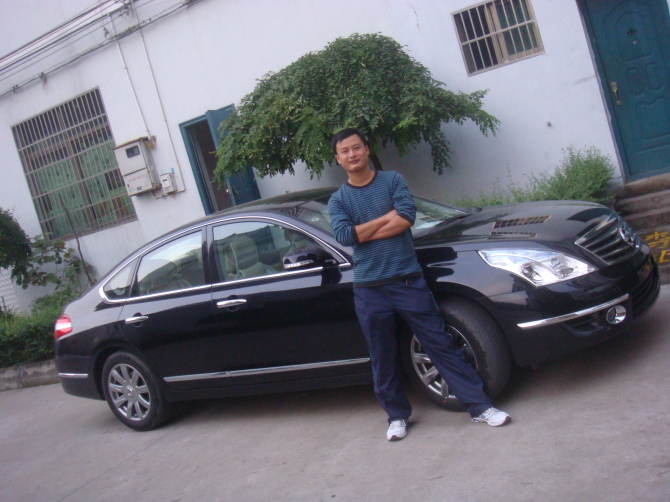

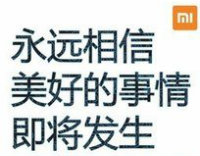



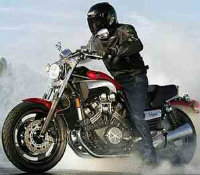


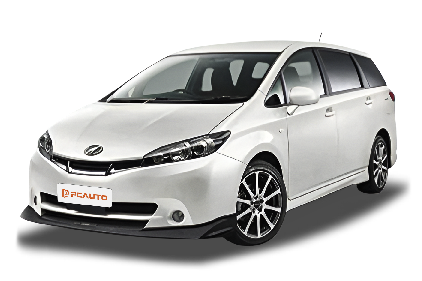



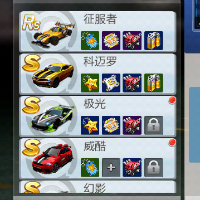
Pros
Cons